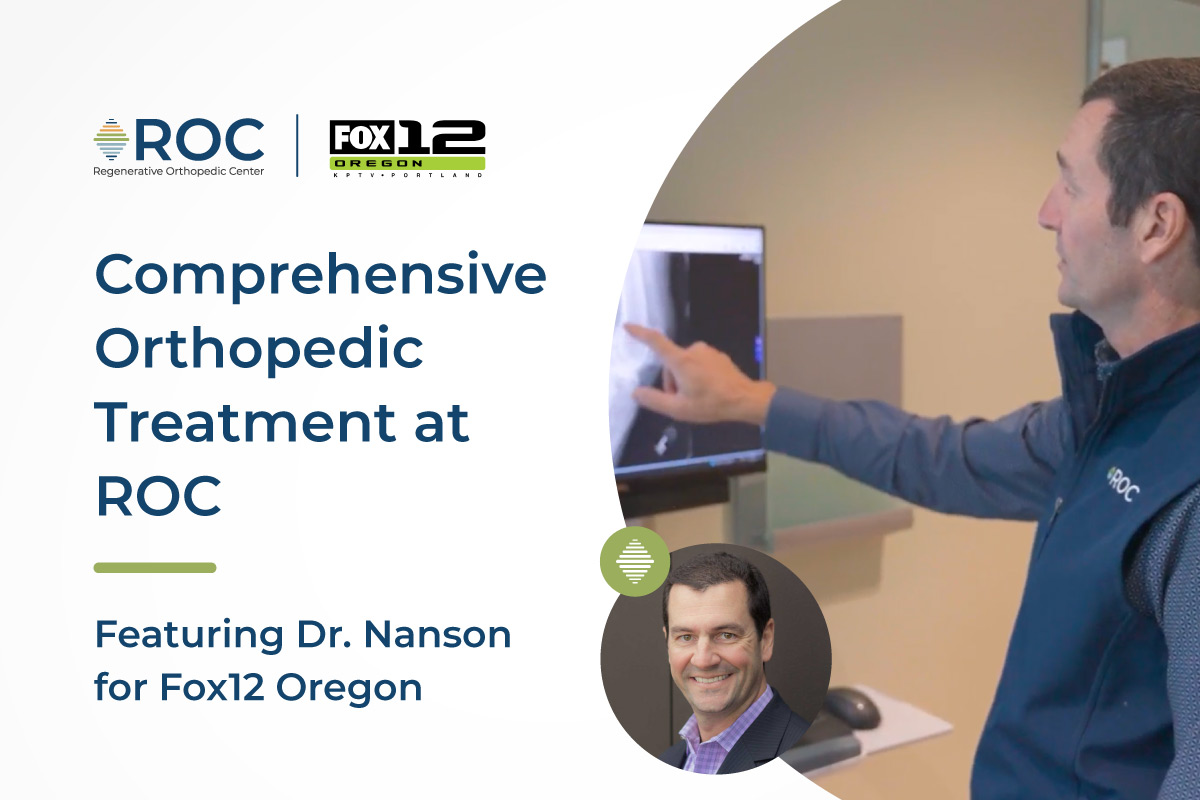Fox12 Oregon’s Good Day Living’s Stephanie Kralevich recently visited ROC’s Tualatin location to catch up with Christopher Nanson, M.D., M.P.H.
Dr. Nanson discusses his work in orthopedic care and the difference one can expect from the procedure of a hip replacement versus a knee replacement.
Video Transcript:
Stephanie Kralevich: ROC stands for Regenerative Orthopedic Center. Today, we are meeting one of the surgeons. We are with Dr. Christopher Nanson, a board-certified orthopedic surgeon here at ROC. Dr. Nanson, what is your specialty here at ROC?
Dr. Christopher Nanson: My specialty here at ROC is hip and knee replacement surgery. So, I replace arthritic joints.
Kralevich: I know there are different options for hip replacement surgery. Which method do you use?
Nanson: So, I do a direct anterior approach hip replacement, and I came out here to Portland and was one of the first surgeons to do that in any high volume. It spares the muscles around the hip and so it’s a little less traumatic. Realistically, by the time you get to six weeks out, a total hip replacement is just a great surgery. So, everybody’s usually doing very well.
Kralevich: So, you’re getting people up and moving again?
Nanson: Absolutely.
Kralevich: Okay. Tell me about the knee replacement procedures you perform.
Nanson: So for knee replacement surgery, it’s a little bit different. Hip replacements are very effective, very well tolerated. A knee replacement is quite different. Causes a lot of swelling. There’s a lot of therapy to do and a lot of work to do afterwards. And so just like my hip replacement surgeries where I was taught how to do a muscle sparing approach, I’ve actually started to do a muscle sparing approach on the knees as well. Less trauma, less pain, less recovery.
Kralevich: So, you are a board-certified surgeon, but you’re not always doing surgery.
Nanson: Exactly. Not always. And, and so patients come in and we need to assess that, but we do offer a full range of non-operative management of all of these conditions.
Kralevich: Tell me about your patient population.
Nanson: Patient population for a joint replacement surgeon tends to be a little bit on the more experienced end of the spectrum. So, our average age for joint replacement surgery in the United States is about 66 or 67 years of age. It’s trending a little bit younger because the technology in the replacements, and the technique in the replacements are allowing us to treat younger patients and not worry about these implants failing. So, we used to say they would last ten years, realistically, they should last twenty five to thirty.
Kralevich: I was so impressed to hear that your patients always say, “I wish I would have had this procedure years ago.” They were suffering in pain and had just put off the procedure.
Nanson: Absolutely. Absolutely. And that’s part of why it’s a really fun job to have quite honestly, because you get to take patients that are having a lot of pain and having a lot of disability and you get to relieve that for them. And the fact that we put in a piece of metal and plastic and it feels better than what you natively had before is really kind of a testament to how much pain people are in, I think, is to be able to take those artificial surfaces, and really make them feel a lot better.
Kralevich: To learn more about orthopedic care and recovery at Regenerative Orthopedic Center, visit rocpdx.com.

